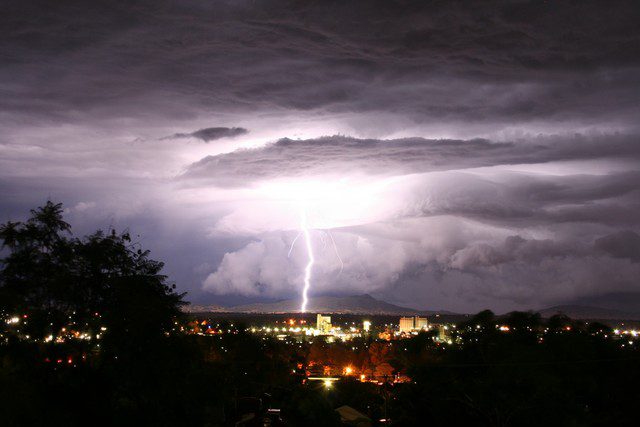Calls to emergency departments suddenly increased in numbers in the wake of a thunderstorm that affected Melbourne, Australia, in 2016, Sciencealert reports.
The event is a rare outbreak of “thunderstorm asthma,” the most intense ever recorded.
A new model, posted on April 14 in the journal PLOS One, suggests that a sequence of lightning strikes, wind gusts, low humidity and popping pollen grains may cause the surge of asthma attacks after the storm, which resulted in the loss of 10 people.
As the name implies, thunderstorm asthma outbreaks happen when a passing storm disperses allergen particles in the air, provoking asthma attacks in sensible people, the American Lung Association says.
The high-risk population includes people with diagnosed asthma, especially if their condition is poorly treated, those with undiagnosed asthma, and people with seasonal hay fever or a ryegrass allergy, as a 2017 report from the Victoria State Government’s Chief Health Officer says.
Though thunderstorms rumble through the sky frequently in multiple regions globally, thunderstorm asthma events are infrequent.
As the first recorded thunderstorm asthma event dates back to 1983, only 22 accounts of the phenomenon made their way in medical literature, as the first author Kathrin Emmerson, a senior research scientist from Australia’s Commonwealth Scientific and Industrial Research Organisation (CSIRO), explained in an email to Live Science.
Out of the 22 outbreaks, ten were recorded in Australia, as it appears that the country is a “hotspot” for the event, she explained.
The most intense outbreak to date happened in the Melbourne area on November 21 2016, at approximately 5:30 local time.
The weather was hot and dry before the storm.
The air included over 133.4 pollen grains per cubic yard (102 grains per cubic meter), showing that grass pollen season reached peak levels in Australia.












Leave a Reply